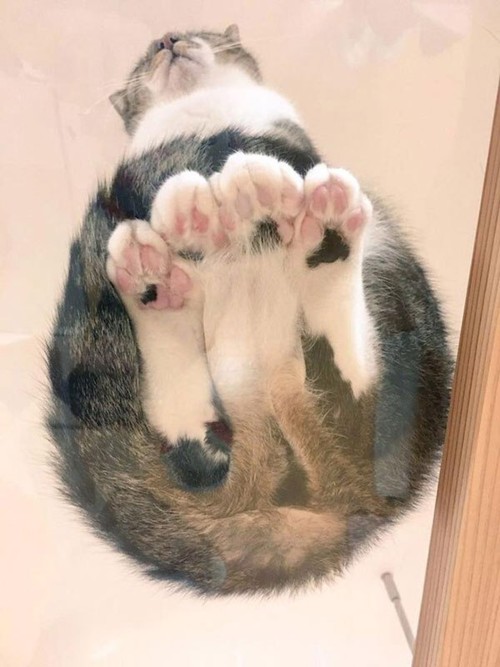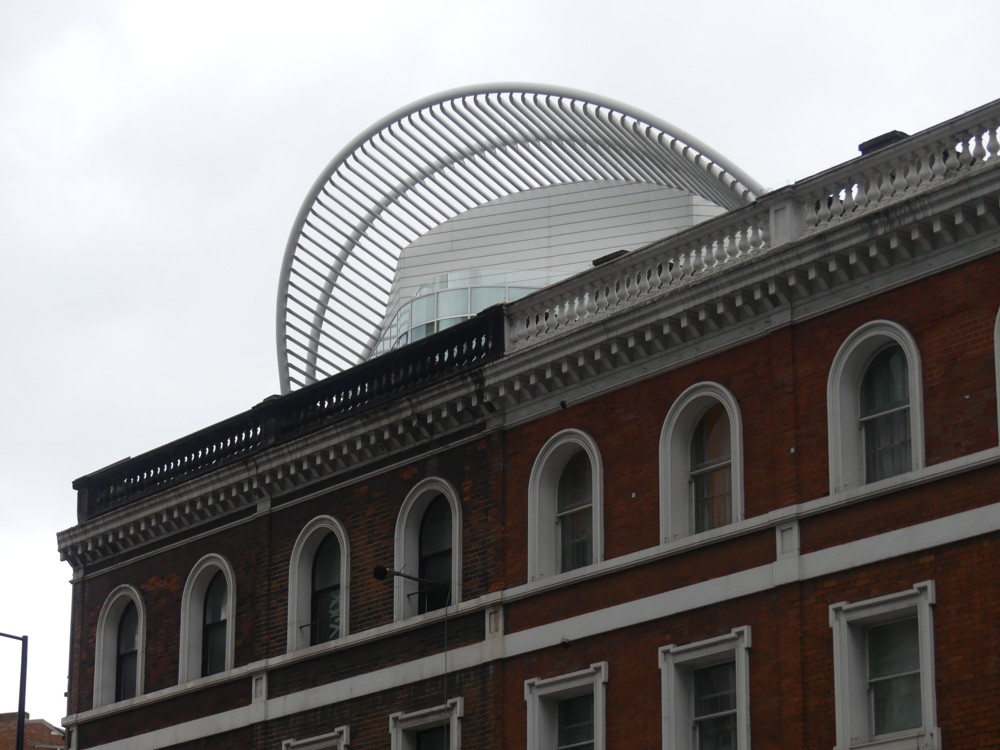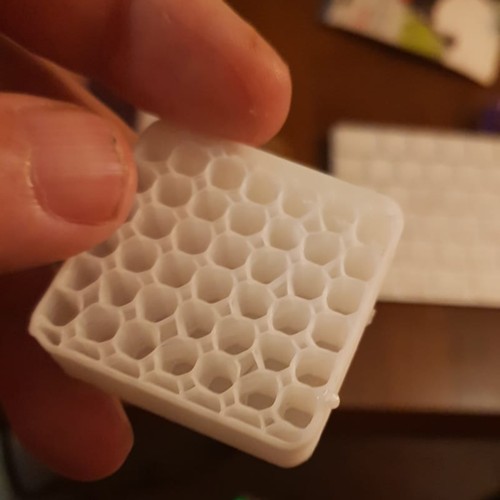This is one of the best ones:

Thank you David Thompson.

With thanks to Patrick Crozier‘s Twitter feed, this, posted by Steve Stewart-Williams.
He got it from Denny Borsboom, who says (at his Facebook page), this:
Different scientific models can have equivalent observational consequences. In statistics, this is known as statistical equivalence; in the philosophy of science, underdetermination of theory by data. This is often hard to explain and I know few good illustrations that go beyond Wittgenstein’s duckrabbit. This GIF is a really nice illustration – and beautiful too.
If I knew how to post a GIF here, I would. But I couldn’t make that work.
For me, the the star with seven points is the most remarkable aspect of this.
Wittgenstein’s duckrabbit is presumably that creature that looks like both a duck and a rabbit, depending.
Or maybe that should be: How Twitter rots the brain.
Instapundit is a daily destination for me, and yesterday, there’s a posting about a piece at Quillette by Cathy Young about Alexander Solzhenitsyn.
So I read that, and am impressed. Solzhenitsyn was a hero of mine when I was at school and university, and like Young, I was puzzled by his subsequent opposition to Western liberalism and fondness for Russian nationalism, along with all the nasty baggage that is liable to bring with it, like anti-Semitism.
At the bottom of the Cathy Young article is the suggestion that I should consider following Cathy Young at Twitter. I do so. I scroll down, and soon find myself smiling at otter jokes, all the otter jokes being based on the fact that “otter” is only one letter away from “other”. Significant otters. In otter news. (Yes, Happy New Year again.)
And: Why did the otters cross the road? To get to the otter side.
This didn’t take long at all.
Indeed:

NASA took the photos, but it was Sean Doran and Brian Swift who spotted the dolphin and “visual artist and citizen scientist” Doran then Tweeted it.

I’m guessing that this dolphin is not a permanent fixture, but an accident of cloud formation. I’m guessing it will soon be gone. But what do I know? About dolphins. On Jupiter. Or anywhere.
See also, these two galaxies, which resemble a penguin looking after its egg.
Well how about that!?!? You wait months for a Brian Micklethwait posting on Samizdata, and then two come along. This one, and this one, in the space of two days!!
The theme of the most recent posting, today’s, is that when it comes to architecture, I like both the modern style and the fake-antique style, and especially when they sit right next to each other.
Like this, for instance:

That was taken in the vicinity of Victoria Station.
The reason I bang on more about architectural modernity here is that I know more about it, and it keeps changing so very interestingly, and for all sorts of other reasons I am too tired to remember just now. But I like antiquity also, even if it is being faked.
I continue to be skeptical about 3D-printing ever “going domestic”. Just because the world can have a 3D-printer in every home, this does not mean that it makes the slightest bit of sense for the world actually to do this. No, all the significant advances in 3D printing are now being made by old-school manufacturers, who now have another tool in their toolbox to make whatever stuff they already know how to design, make and sell. 3D-printing is additive in the literal sense, that being how it works. It is also additive from the business point of view. It is a technique that has been added to conventional manufacturing. 3D-printing is not “disruptive”. It is the opposite of that.
Nevertheless, and despite all that, a friend of mine has recently purchased a domestic type 3D-printer, for him to play around with. And despite everything I have learned about how the 3D-printing market is and is not developing just now, and despite the fact that I wouldn’t dream of acquiring such a contraption myself, I can’t stop myself being interested in what my friend does with his new toy. 3D-printing is just so miraculous, so Dr Whoozy, so Star Trecky, so downright amazing, as and when it starts to work as well as it clearly will work, once the Geekocracy have truly got it working properly.

The above is a very early “product”, as advertised by my friend on Facebook, those being his fingernails. Just conceivably, what my friend will do is develop a repertoire, so to speak, of such “products”.
I put “products” in inverted commas because we’re not talking big business here. More like small acts of friendship. Him being that most potent combination, a Geek who nevertheless knows how to make and keep non-Geek friends, he might soon be 3D-printing useful bespoke items for the rest of us. So we don’t have to.
Trouble is, it’s hard to think what these things might be. But I am sure that over the decades to come, ideas will materialise.
What I am foreseeing is a world in which 3D-printers appear not in all homes, but in just enough homes for all those who want any of these “products” to be able to ask their designated Geek friend to get to work. And I suppose some actual business might even emerge from this, in the form of designs for popular items.
Jewellery and kid’s toys are two obvious things, although you need to watch out the kid’s toys are not the sort they might be tempted to swallow.
What made me think that the above speculations might not be absurd was not only my friend’s Facebook posting, but also this piece, about a retired engineer who makes trinkets for his little network of friends.
Ninety-four-year-old John Downes is not your average pensioner.
A retired engineer, Mr Downes’s room at his Cambridgeshire care home contains not one, but three state-of-the-art 3D printers – technology he uses for the benefit of his fellow residents.
Having lived in Toft for almost 50 years, Mr Downes decided to remain in the village when he moved to the nearby Home Meadow care home in May last year.
Note that. He remains where has always lived, and keeps all his local friends. I bet he makes the occasional stuff for people beyond his care home.
There, he was keen to continue his tech-based hobbies, so staff arranged for his 3D printers to be set up in his room.
A retired engineer, Mr Downes’s room at his Cambridgeshire care home contains not one, but three state-of-the-art 3D printers – technology he uses for the benefit of his fellow residents.
But like I say, the problem here is not the technology. It is worthwhile ideas about what to do with it, other than sensible things like making bits for airplanes or spare parts for cars, nearer than China, which won’t be done in anyone’s home.
As soon as I think of something that I want my friend to make for me I will let him know, and probably all of you too.
Here’s a thought. A mutual friend of 3D-printer man and me is building a railway layout for his kids. (And, you suspect, also for himself.) Maybe 3D-printing can add something to that project.
A slow motion catastrophe, all the more inevitable because this is, after all the internet. But, it doesn’t happen.
This popped up on my computer screen, courtesy of Facebook. What happened was was that I activated a video a Friend had stuck up, and this was what Facebook wanted me to see next. It looked like a nice little catastrophe to pass the time with, so I activated that as well. And although that catastrophe didn’t happen, what did happen was even better.
Do the people who arrange things like this play with toys beforehand? That would make sense.
Apparently Transport Blog may be coming back to life, any month now. But, it promises nothing.
As I earlier said, about this taxi, and various photoshopped variants of it:
I hope I chance upon the original, and get a go at photoing it myself.
Well, yesterday, in Warwick Way, I did chance upon it:
I speculated recently that photoing sculpture might be easier to do well in cloudy light. I also recently speculated that something similar might well apply with brightly coloured vehicles. The above bright yellow taxi would seem to confirm this.
Next advert-taxi target, this very cute Swarovski taxi. I have already spotted one of these taxis twice, but my first sighting was in the dark with me burdened with laundrette stuff, and my second sighting was yesterday morning, but after I had been shopping and was thus similarly burdened. I tried to photo it, but it had moved on before I could.
Photoing taxis is a lot easier when they are parked. It is also easier if the driver is not present. If he is, I say I am interested in his advert, and ask permission to photo first. Once they know you aren’t snooping on their parking habits, they’re usually very agreeable.
I often find the Tweets at Market Urbanism baffling, because they concern obscure American political disputes. But even as I am baffled by the second half of this (what on earth does “filter hard and fast” mean?), I agree with the first half. I also unironically love these:
The Tweet contains a link to this Bloomberg report, which is where Market Urbanism and I got that photo, and which notes (rather gleefully/) that the builder of these things has gone bankrupt.
I do unironically love these gloriously unfashionable little stately homes, but I do not totally love everything about them. Because what is about each one of these fake chateaux, is lots of others that are identical. A lot of the point of living in a building like this is surely that there is nothing else like it in the vicinity. Such a pile should be uniquely recognisable, and architecturally victorious over all the neighbours in the “my house is the poshest” contest. If there is going to be a herd of these things, let there be a bit of variety.
But despite all those nitpicks, I do think that the world could use a lot more fake antiquity of this kind. In particular, I wish more of this sort of stuff was allowed in England. Uninterrupted “honest” modernity can get very dreary, I find. I love those London Big Things that I bang on about here, but a lot of the fun of them is how, closer up, they often tower over buildings erected a couple of centuries earlier.
However, the trouble with newly minted fake antiquity is that this too can look rather dreary and soulless.
When fake antiquity really comes into its own is when it has been around for a while, and people can no longer see how fake it is.
The world seems to be full of well-connected, in-power aestheticians – who demand that every new building be modern, and badly-connected, out-of-power aestheticians – who hate modernity. I want lots of both, all muddled together.